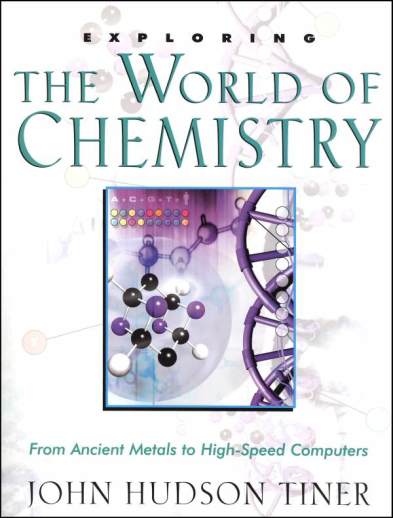We use cookies to make your experience better. To comply with the new e-Privacy directive, we need to ask for your consent to set the cookies. Learn more.
Exploring the World of Chemistry
An introductory history of chemistry, this extremely readable text covers discoveries and developments from ancient to present times. Major emphasis is placed on the contributions of individual scientists (such as Cavendish, Mendeleev, Boyle, and Rutherford) and how they made their discoveries. The focus is not on balancing chemical equations or learning the number of electrons in specific elements. 16 chapters cover: ancient metals (iron, lead, tin), money metals (gold, silver, copper), the search for gold, gases in the air, the use of currents to separate elements, the first periodic table, using a spectroscope to identify elements, cathode ray tubes and alpha particle experiments, compounds by electric attraction, water and its unique properties, carbon and its compounds, organic chemistry, nitrogen and its compounds, silicon and its compounds, modern metals, and chemistry in today's world.
Chemistry is an amazing branch of science that affects us every day, yet few people realize it, or even give it much thought. Without chemistry, there would be nothing made of plastic, there would be no rubber tires, no tin cans, no television, no microwave ovens, or something as simple as wax paper.
This book presents an exciting and intriguing tour through the realm of chemistry as each chapter unfolds with facts and stories about the discoveries and discoverers. Find out why pure gold is not used for jewelry or coins. Join Humphry Davy as he made many chemical discoveries, and learn how they shortened his life. See how people in the 1870s could jump over the top of the Washington Monument.
Exploring the World of Chemistry brings science to life and is a wonderful learning tool with many illustrations, biographical information, chapter tests, and an index for easy referencing.
Following the suggested schedule in the planner for the Explore Series (180 lessons), students will complete the course in one year, but they only receive ½ credit if done at the high school level (with the exception of Survey of Science, which is one full credit).These are transitioning from Parent Lesson Planners to Teacher Guides.
| Product Format: | Softcover Book |
|---|---|
| Grades: | 6-9 |
| Brand: | Master Book Publishers |
| Author: | John Hudson Tiner |
| ISBN: | 9780890512951 |
| Length in Inches: | 11 |
| Width in Inches: | 8.5 |
| Height in Inches: | 0.5 |
| Weight in Pounds: | 0.95 |
| Edition: | Illustrated |
| Pages: | 160 |
| Publication Date: | 9/1/2000 |
Hello!
Unfortunately, I might not be of much help to you; however, I'm still going to offer a couple suggestions to you as it might be helpful.
We own most, if not all, of Tiner's books and really enjoy them. Yes, more introductory level. From there, we have gone two different routes, depending on if the child ready for the next level is strong in math or not. If strong in math, we use Jay Wile's science texts (BereanBuilders) and highly recommend them! If the child is not strong in math, the curriculum resource we use is The 101 Series as it is a conceptual science course and not math-heavy, which is also great. In fact, those children strong in math, we still have watch the 101 DVDs alongside Wile's text, mainly b/c they're fun and full of good info. The series was personally recommended to us by Jay Wiles himself when we contacted him about a child not strong in math and using his resources, so we felt confident in them from the get-go.
We have yet to use either Wile's or The 101 Series for Chemistry though, but plan to soon, and have no doubt they'll both be great.
Blessings to you on your journey!
No, there are no experiments. It’s more of a history of chemistry with the stories of major contributions to the field. There are little quizzes at the end of each chapter. We really like the Tiner books. The book is an introduction to the topic, but not hands-on.
This is a wonderful book to introduce chemistry but is not a true chemistry course. It does have questions at the end of each chapter and answers in the back of the book. I'd say it's a 7th grade level introduction. Gives history, biographies and some basic concepts of chemistry. Master books has a website too.


It's important for my son to learn about Chemistry.
It was recommended by a seasoned homeschool mom.
The text looks interesting to read, giving historical context to the subject matter.
Curriculum for her Classical model school.